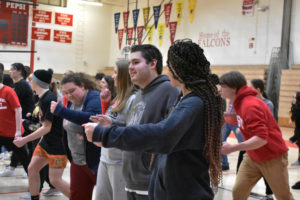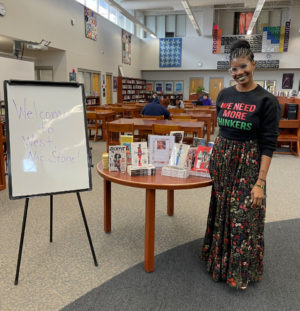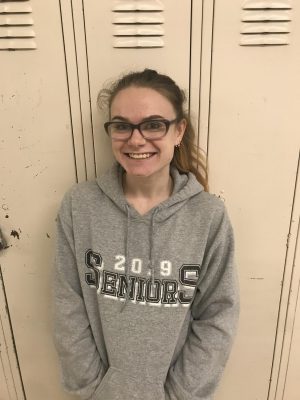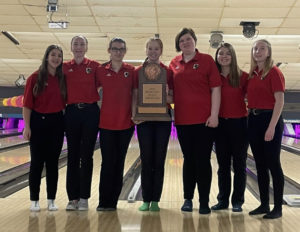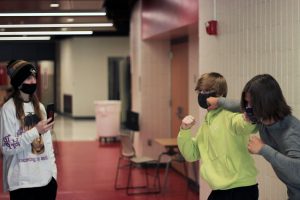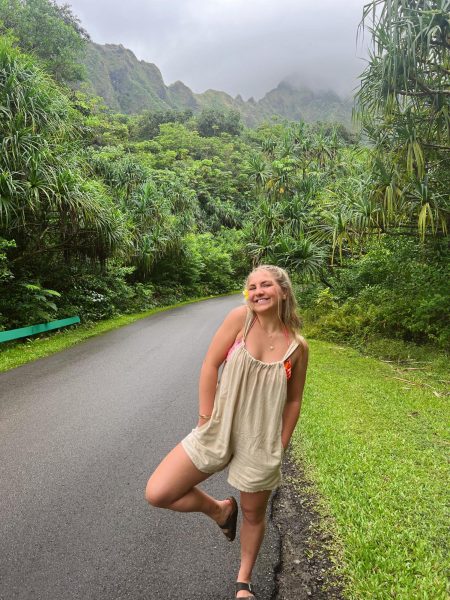Anatomy and Physiology class take trip to cadaver lab
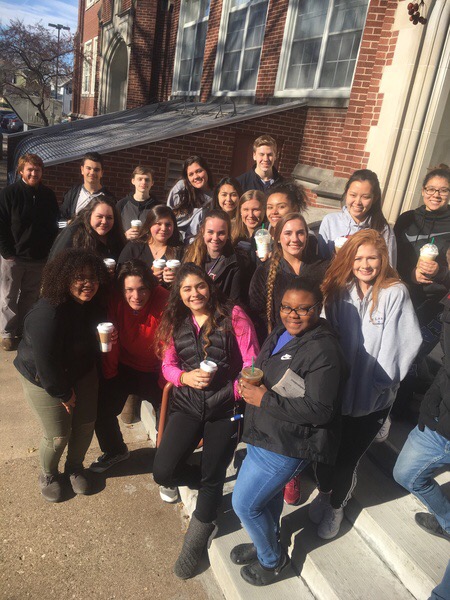
Photo published with permission by Lisa Powell
Science teacher John Arnold’s Anatomy and Physiology class takes a trip to St. Ambrose’s cadaver lab.
December 18, 2017
On Dec. 12, science teacher John Arnold took 19 students from his Anatomy and Physiology class over to St. Ambrose to visit one of the three cadaver labs they have in their science building. Students were able to interact with a cadaver and learn information about some things they are currently covering in class.
The average person might think of a cadaver as a corpse, but they have two different meanings. A cadaver is used more for scientific purposes, whereas a corpse is more used by cops and other officials to describe a dead body. They are both actual dead bodies, but are referred as two different things.
“We were able to connect with the [science] department and get a walk through with one instructor. They were with us the whole time to check out one of the three cadaver labs and we got to see one of the cadavers they have on display,” Arnold said.
Students got the chance to hold parts of a cadaver such as the brain, lungs and some bones. They were surprised to find out that some of these body parts were nothing like what they expected them to be.
“The professor brought out a box of real bones and we were able to hold them. I was surprised to find out that they were astoundingly light. I think it is crazy that those support our bodies,” junior Aldin Isic said.
“At first I was a little scared to see the bodies because I had never seen a dead body before, but after seeing it for a little longer I was not scared,” junior Nayeli Calzada said.
Although the trip only lasted a little over an hour, students came in with several questions and left with so many more. They walked away with important information regarding the body and how it works, and information that can help them overall in their Anatomy and Physiology class.
“We were able to feel a cadavers femoral artery. We also got to hold her heart and see her appendix and intestines. We were surprised to find out that the intestines are all attached to each other. We learned that the intestines are held together by the mesentery. That was very interesting to learn,” junior Logan Keding said.
For students interested in the medical or science field, visiting a cadaver lab can be quite an enlightening experience. It can open your eyes and prepare you for your next step in life and even encourage you to take on a certain profession when you are older.
“It was a very cool experience and it definitely solidified that I wanted to do something in the medical field,” Keding said.


